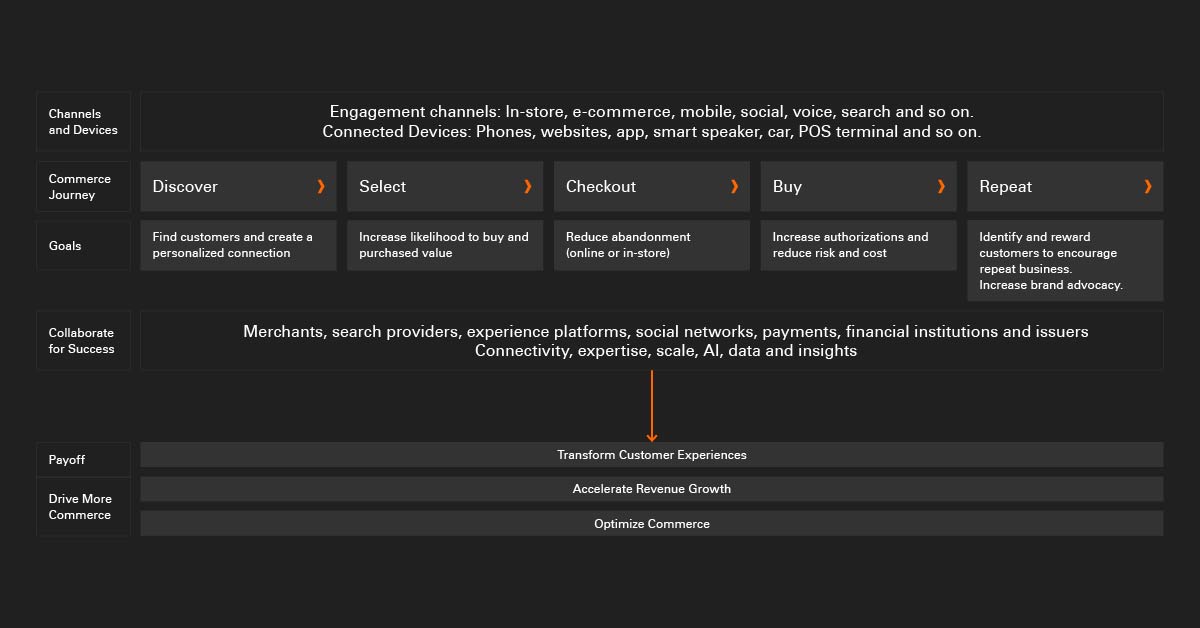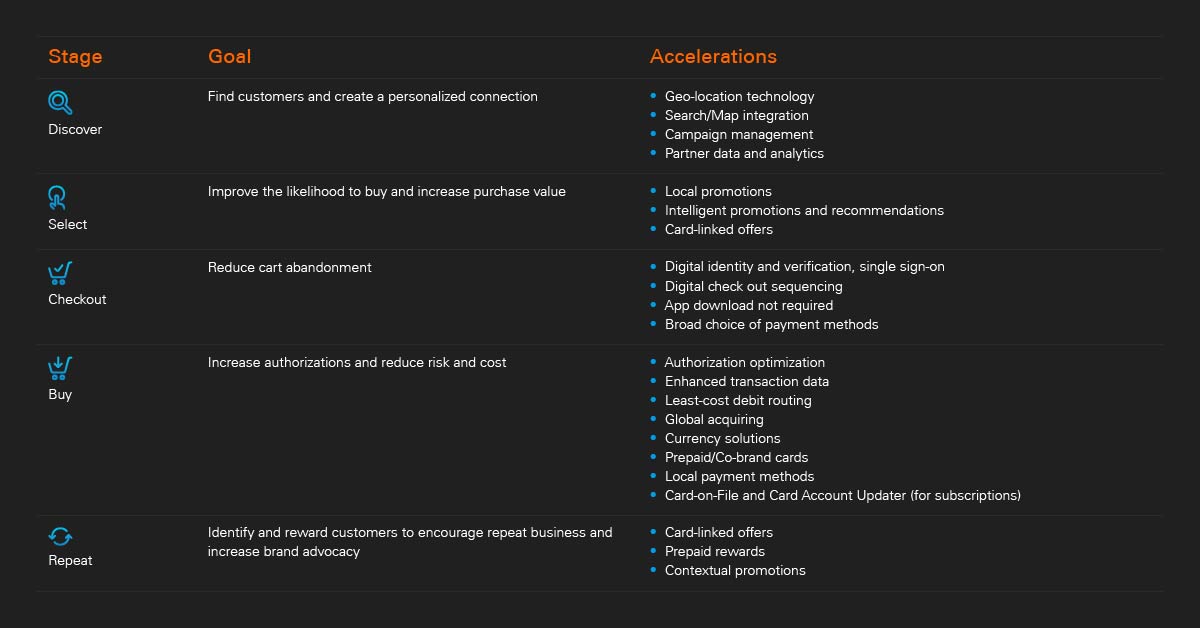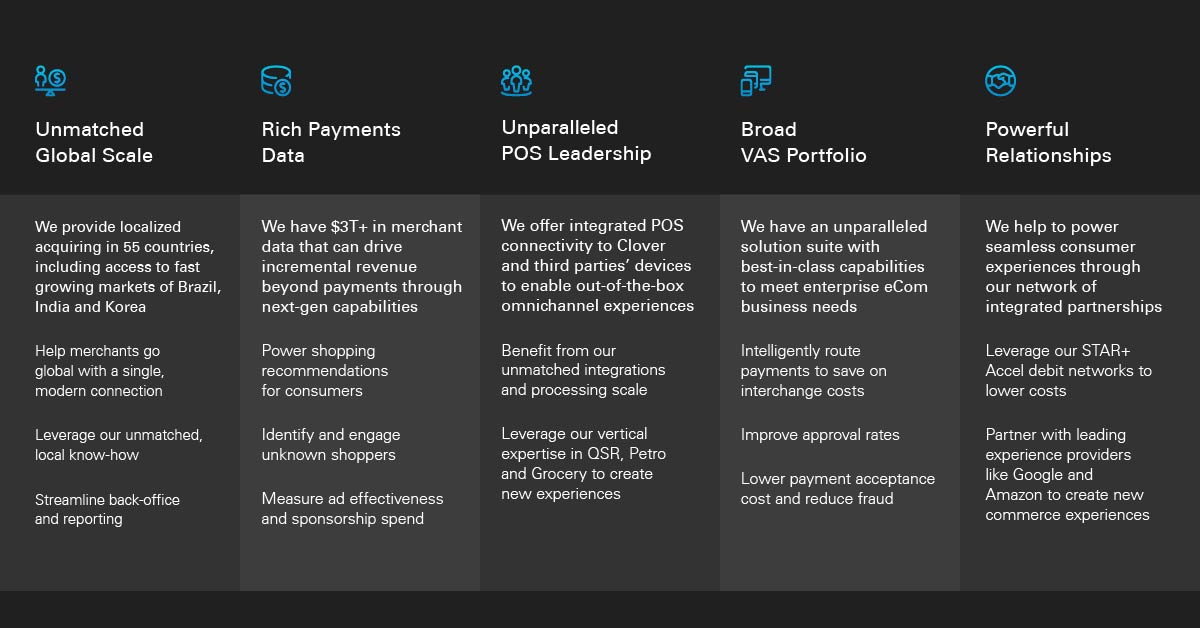
We have witnessed a seismic shift in the relationships between consumers and retailers due to the pandemic and the demand for safe interactions. At the heart of this retail transformation lies the customer journey, and the impacts felt from the swift adoption of new operating models across traditional and digital channels.
Today, retailers are pursuing strategies that put customers at the center of every omnichannel initiative to drive deeper engagement and convert more shoppers to buyers.
“The customer is the channel. A winning customer experience strategy recognizes that the blended channel is the only channel and that retailers need to leverage deep customer insight to understand how various customer segments navigate the customer journey across digital and physical channels.”
Steven Dennis, author of Remarkable Retail, and former SVP of strategy and multichannel marketing at Neiman Marcus. Source: Forbes article
The blending of digital and in-person experiences has made it increasingly important for brands to provide a consistent and seamless experience across channels. Consumers expect to be able to engage and purchase products from their favorite brands on the channels of their choice.
This requires a coordinated effort that encompasses channel strategies, operating models, data analysis, marketing programs, and technology stacks. Omnichannel activities and investments should remove silos and deliver a meaningful customer experience throughout the entire commerce journey.
NAVIGATING THE EVOLVING CUSTOMER JOURNEY
Shopping used to be linear and transactional: identify a need or want, visit a store, select the merchandise, and buy it at the checkout counter.
Today, shopping is a fluid, multi-faceted consumer experience that encompasses a variety of channels, platforms, devices, and payment options. Customers are empowered with more information than ever and have the tools to find whatever they want, whenever, and however they prefer – in-person, online, through a mobile app, or with their voice.
Enterprise retailers must consistently optimize their customer journey by creating local, personalized connections with each customer. This helps ensure happy and loyal customers as they expand into new segments and locations.
Now, let’s go beyond the transactional “buy button” to take a closer look at the new customer experience.
The Commerce Journey

Connected Consumers
This is the age of always-on consumers—especially Gen Z—who move effortlessly across a number of digital platforms to connect with friends, engage with social issues, and discover brands. While mobile may currently be their primary go-to device, more and more devices—including smart speakers, smart appliances, connected cars—are laying the foundation for the next frontier of connected commerce.
eCommerce, mobile, and digital sales continue to grow. However, brick-and-mortar stores are still customers’ dominant channel for making purchases and are integral to a brand’s—even a digital native—strategic customer experience.
Digital’s Impact on the Commerce Journey
While consumers may now take a non-linear approach to shopping, the goals for each stage remain the same, and shoppers should be able to easily channel surf through each step. Consistency drives loyalty. The opportunity is to use technology to employ personalized programs designed to engage customers, entice them to advance to the next stage, and recognize and reward them when they return.

Collaborating for Success
You own the brand and the customer experience, but that doesn’t mean you are responsible for the underlying technology and touchpoints for every customer interaction.
Successful brands choose trusted partners that have global reach and deep segment experience across channels to help bridge relationships that bring the right technology, rich data, and key insights to the table to quickly scale for success. Tapping into the vertical market expertise of global solution providers opens the door to a range of strategic relationships that can help retailers leapfrog the competition.
HOW TO ENGAGE CUSTOMERS AND DRIVE MORE COMMERCE
Customer experience matters. So does the bottom line. Here’s how brands that bring a data-centric, unified approach to the retail customer experience will leap ahead to deepen customer relationships, increase revenue, drive loyalty, and control costs.
Transform the Customer Experience with Personalization
Shifts in shopping and consumer behavior are fueling businesses to implement omnichannel strategies that can help close the digital-to-physical divide. Consumers use a variety of connected devices to search, compare, consult, browse offers, visit stores and sites, make purchases, and rate their experiences. Mobile is the channel most responsible for the customer experience transformation. The pandemic accelerated the shift to digital by two years, with U.S. online retail sales reaching $795 billion in 2020, an increase of nearly one-third. [eMarketer].
73% – Shoppers hop across at least two channels [Harvard Business Review]
68% – Website visits in 2020 initiated from mobile devices [Perficient]
$1 in every $5 – online retail purchases {U.S. Department of Commerce]
Stores are not going away and are instead evolving into the role of brand billboards, showrooms, experience hubs, as well as local fulfillment and returns centers. According to McKinsey & Company, by 2023, 80% of total retail sales will still be in-person, and the future will belong to the retailers—including digital natives—that embrace a true omnichannel experience. This takes cross-team collaboration to break down functional boundaries across digital and traditional teams from marketing to merchandising to fulfillment.
Successful brands are central to the consumer experience. Creating a hyper-local, physical presence bridges the connection between in-person and digital experiences. This demands a 360-degree view throughout the journey and across all channels.
63% – People that expect brands to deliver a consistent experience with every interaction. [Google]
42% – People that believe brands succeed at providing a consistent experience [Google]
25% - Customers feel more connected to a brand when they go in-store [Walker Sands]
Consumers know what they want and when they want it. And brands should too. Shoppers are more likely to buy from a company that offers relevant and personalized experiences and promotions. Lifestyle and value factors influence the customer journey, and social media is at the center of engagement. These days, customer segmentation expands beyond location and generation to include attitudinal factors such as value and convenience, environmental and social responsibility, and memorable, personalized experiences.
It is vital for companies to create a personal, human connection to their brand, anticipate customer needs, and meet expectations seamlessly across all channels.
63% – People that expect brands to use their purchase history to provide a more personal experience [Google]
62% - Customers share bad experiences on social [Search Engine Watch]
56% - Consumers pay more with brands they are loyal to [Higher Visibility]
Best Practice: Seize the moment
- Make it personal
a. Use purchase history, geo-location data, AI machine learning technology, and social engagement to create localized promotions and meaningful experiences that help build customer loyalty.
- Remove the silos `
a. Create an integrated, omnichannel strategy by connecting POS and online platforms that share key metrics, driving traffic and encouraging engagement.
- Take charge
a. Don’t co-opt the experience to a third-party. Align collective goals and performance metrics to help deliver an ideal “on us” customer journey.
Explore the Fanatics Case Study >
Use AI and Personalized Technology to Accelerate Revenue Growth
Personalization done right drives revenue. Revenue and loyalty increase when companies integrate technologies that identify customers, present targeted offers, suggest similar and additional items, convert more shoppers to buyers, and create an environment that compels recommendations and repeat business.
Data, smart analytics, and AI can enable more meaningful and consistent experiences across the commerce journey, removing potential speedbumps that could result in abandoned sales.
10% - incremental revenue growth [Boston Consulting Group]
20% - improvement in net promoter scores [Boston Consulting Group]
10-15% - Greater revenue and retention due to omnichannel personalization (Rila)
Utilize relationships to engage in collaborative commerce. This creates a vast omnichannel commerce ecosystem where members—merchants, search providers, experience platforms, issuers, FIs, payment processors, and more—share ideas, integrate technologies, and enrich data to identify both known and anonymous shoppers, better understand customer behavior, and drive outcomes. Being part of an omnichannel commerce ecosystem is extremely beneficial, especially since speed if of the essence.
Remove friction from the checkout process turns browsers to buyers. Consumers are experiencing “app clutter” and may abandon a purchase if required to download a new app. Recent trends indicate that an enhanced mobile web experience drives value and conversions.
Customers are more likely to complete a purchase when they can easily hop across channels, are presented with pricing in their local currency, and can use their payment method of choice. Services that allow consumers to “buy now, pay later”accelerating in popularity, thanks to Gen Z.
56% - Americans have used “Buy Now, Pay Later” [The Ascent]
13% - 18- to 34-year-olds have used buy now, pay later, compared with the 9% survey average [eMarketer]
55% - Customers will abandon a purchase if they have to reenter payment or shipping information [Sleeknote]
Learn more about Buy Now, Pay Later solutions >
Best Practice: Don’t leave it to chance
- Act with intention
a. Use real-time data supported by artificial intelligence to help identify customers, present targeted offers, convert browsers to buyers, and reward repeat business.
- Team up `
a. Embrace a networked ecosystem of trusted partners to share data and ideas that can accelerate success and keep you ahead of pure digital rivals.
- Remove friction
a. Allow customers to effortlessly channel surf as they find, fulfill, and pay for purchases. Offer a choice of payment methods and services to entice purchases and increase basket size.
Explore Radius8 Case Studies >
Enrich Data to Optimize Commerce
Balancing security while delivering a great customer experience isn’t easy. The shift to digital means that merchants are accepting a higher percentage of payments via online channels, which carry an increased risk of fraud. This often translates to higher interchange and transaction costs as well as an increase in chargebacks and write-offs.
New shopping habits, such as buy online pick-up in store (BOPIS), digital gift cards or curbside pick-up, led to more chargebacks.
55% - Increase in BOPIS fraud year over year in H1 of 2020 [RIS News]
$50B – Estimated friendly fraud in 2020 [Mercator Advisory Group]
$130B – Retailer loss in digital card-not-present fraud by 2023 [Juniper Research]
Optimizing commerce takes experience, advanced technology, and robust risk management. Approving legitimate purchases and efficiently handling refunds will improve the customer experience and encourage repeat business. Allowing customers to pay without leaving your platform reduces third-party transaction costs and puts you in front of the customer experience.
New users are flocking to digital channels at higher rates than ever before. While this presents an opportunity for merchants, it also poses a risk.
42% - Customers would not try again if their payment was declined [RIS News]
39% - Customers will abandon a purchase if it is difficult to enter personal information [Sleeknote]
92% - Customers will buy from a brand again if the return process was easy [invesp]
Data captured during checkout delivers insights that inform engagement strategies across the entire customer journey. Understanding a customer’s preferred payment method, location, and purchasing channel creates a feedback loop that helps brands enhance their omnichannel commerce strategies. Identifying returning customers speeds the checkout process and improves net promoter scores.
Best Practice: Keep more of your money
- Stay ahead of fraudsters
a. Employ machine learning to send issuers enriched data that can help drive higher approval rates, mitigate fraud, and minimize chargebacks.
- Control transaction costs `
a. Use your own apps and platforms to help eliminate third-party fees. Offer an array of lower-cost payment methods and route transactions through the most cost-effective networks.
- Reward loyalty
a. Identify returning customers and their save their preferences to speed checkout, improve satisfaction, and increase recommendations.
Explore the Microsoft Case Study >
CARAT IS UNIQUELY POSITIONED TO LEAD THE NEXT GENERATION OF COMMERCE

Carat is the omnichannel commerce ecosystem that drives more commerce for large enterprises across the most popular channels and devices, securely and at scale. Through a single integration, Carat enables large enterprises to easily access pre-integrated commerce solutions and third-party connections that allow businesses to imagine and realize new customer experiences, globally.




